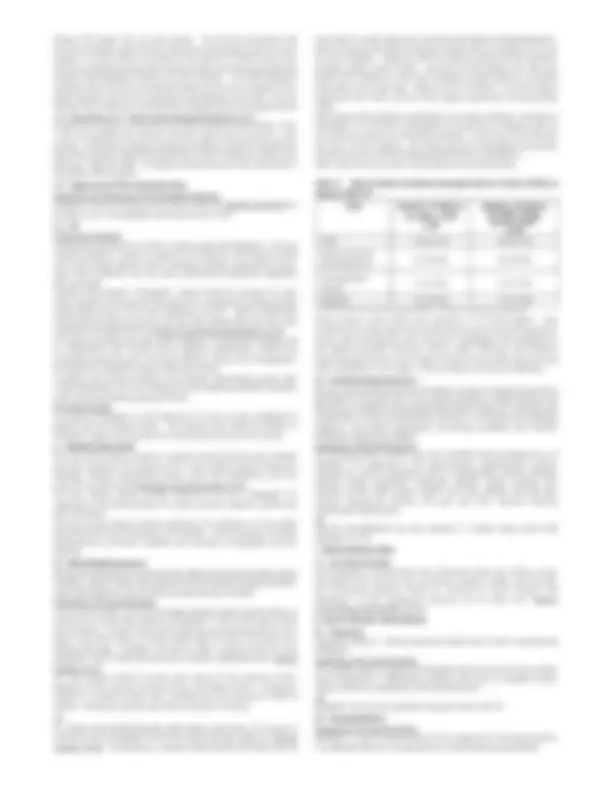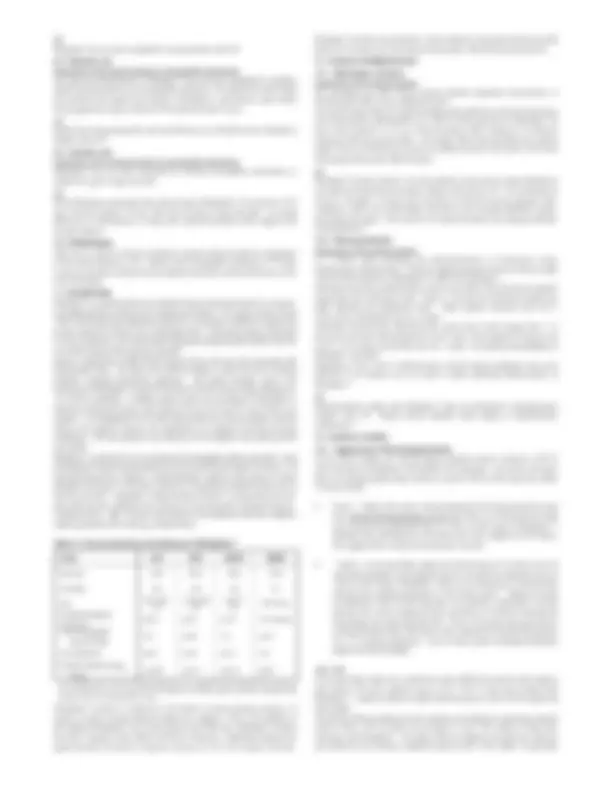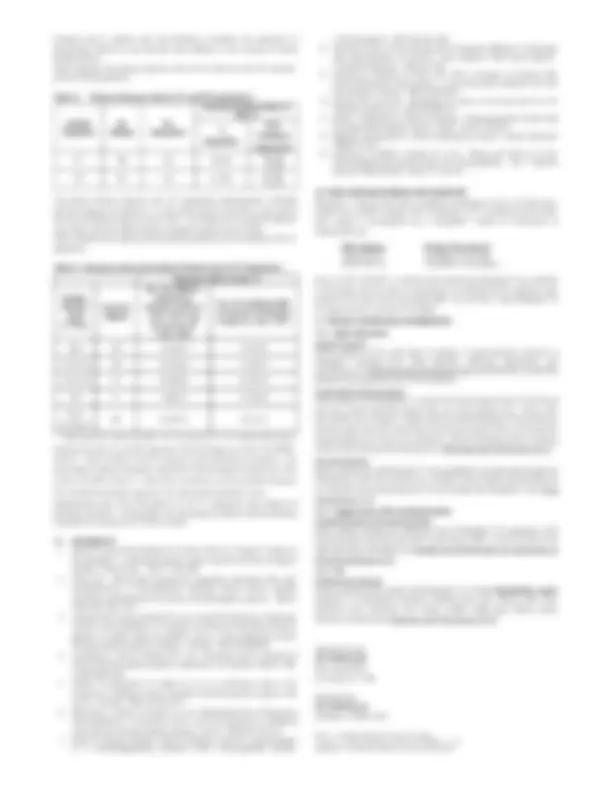





Study with the several resources on Docsity

Earn points by helping other students or get them with a premium plan


Prepare for your exams
Study with the several resources on Docsity

Earn points to download
Earn points by helping other students or get them with a premium plan
Community
Ask the community for help and clear up your study doubts
Discover the best universities in your country according to Docsity users
Free resources
Download our free guides on studying techniques, anxiety management strategies, and thesis advice from Docsity tutors
Information on Rhophylac®, a medication used for Rh isoimmunization during pregnancy and obstetric conditions, as well as for raising platelet counts in Rh0(D)-positive adults with chronic ITP. It includes recent major changes to indications and usage, dosage and administration, and warnings and precautions. The document also lists contraindications, warnings, precautions, adverse reactions, and drug interactions.
What you will learn
Typology: Study notes
1 / 5

This page cannot be seen from the preview
Don't miss anything!




These highlights do not include all the information needed to use Rhophylac®^ safely and effectively. See full prescribing information for Rhophylac®.
For Intravenous or Intramuscular Injection Initial US Approval: 2004
---------------------------RECENT MAJOR CHANGES----------------------------------- Indications and Usage, ITP (1.2) 03/ Dosage and Administration, ITP (2.3) 03/ Warnings and Precautions, ITP (5.3) 03/
----------------------------INDICATIONS AND USAGE---------------------------------- Rhophylac®^ is indicated for: Suppression of rhesus (Rh) isoimmunization (1.1) in :
1.1 Suppression of Rh Isoimmunization 1.2 Immune Thrombocytopenic Purpura (ITP) 2 DOSAGE AND ADMINISTRATION 2.1 Preparation and Handling 2.2 Suppression of Rh Isoimmunization 2.3 ITP 3 DOSAGE FORMS AND STRENGTHS 4 CONTRAINDICATIONS 5 WARNINGS AND PRECAUTIONS 5.1 Both Indications 5.2 Suppression of Rh Isoimmunization 5.3 ITP 6 ADVERSE REACTIONS 6.1 Clinical Studies Experience 6.2 Postmarketing Experience 7 DRUG INTERACTIONS
7.1 Live Virus Vaccines
1500 IU (300 mcg) per 2 mL prefilled syringe (3)
-----------------------------------CONTRAINDICATIONS ------------------------------- Anaphylactic or severe systemic reaction to human immune globulin products (4)
-----------------------------WARNINGS AND PRECAUTIONS-------------------------- Both Indications (5.1)
---------------------------------ADVERSE REACTIONS---------------------------------- Suppression of Rh Isoimmunization Most common adverse reactions are nausea, dizziness, headache, injection-site pain, and malaise (6.1) ITP Most common adverse reactions are chills, pyrexia/increased body temperature, headache, and mild extravascular hemolysis (increased bilirubin, decreased hemoglobin) (6.1)
To report SUSPECTED ADVERSE REACTIONS, contact CSL Behring at 1-866-915-6958 or FDA at 1-800-FDA-1088 or www.fda.gov/medwatch.
------------------------------DRUG INTERACTIONS-------------------------------------- Immunoglobulin administration may transiently impair efficacy of live virus vaccines (7.1)
------------------------USE IN SPECIFIC POPULATIONS------------------------------- Suppression of Rh Isoimmunization
See 17 for PATIENT COUNSELING INFORMATION. Revised: 03/
8.1 Pregnancy 8.3 Nursing Mothers 8.4 Pediatric Use 8.5 Geriatric Use 10 OVERDOSAGE 11 DESCRIPTION 12 CLINICAL PHARMACOLOGY 12.1 Mechanism of Action 12.3 Pharmacokinetics 14 CLINICAL STUDIES 14.1 Suppression of Rh Isoimmunization 14.2 ITP 15 REFERENCES 16 HOW SUPPLIED/STORAGE AND HANDLING 17 PATIENT COUNSELING INFORMATION 17.1 Both Indications 17.2 Suppression of Rh Isoimmunization 17.3 ITP
***** Sections or subsections omitted from the full prescribing information are not listed.
For Intravenous or Intramuscular Injection Preservative-free, Latex-free, Ready-to-use Prefilled Syringe
1 INDICATIONS AND USAGE
1.1 Suppression of Rh Isoimmunization Pregnancy and Obstetric Conditions Rhophylac®^ is indicated for suppression of rhesus (Rh) isoimmunization in non- sensitized Rh 0 (D)-negative women with an Rh-incompatible pregnancy, including:
1.2 Immune Thrombocytopenic Purpura (ITP) Rhophylac®^ is indicated in Rh 0 (D)-positive, non-splenectomized adult patients with chronic ITP to raise platelet counts.
2 DOSAGE AND ADMINISTRATION As with all blood products, patients should be observed for at least 20 minutes following administration of Rhophylac ®^.
2.1 Preparation and Handling Bring Rhophylac®^ to room temperature before use. Rhophylac®^ is a clear or slightly opalescent, colorless to pale yellow solution. Rhophylac®^ should be inspected visually for particulate matter and discoloration prior to administration. Do not use if the solution is cloudy or contains particulates. Do not use solution that has been frozen. Rhophylac ®^ is for single use only. Dispose of any unused product or waste material in accordance with local requirements.
2.2 Suppression of Rh Isoimmunization Rhophylac®^ should be administered by intravenous or intramuscular injection. If large doses (greater than 5 mL) are required and intramuscular injection is chosen, it is advisable to administer Rhophylac®^ in divided doses at different sites. Table 1 provides dosing guidelines based on the condition being treated.
2.3 ITP For treatment of ITP, Rhophylac^ must be administered by the intravenous route. A 250 IU (50 mcg) per kg body weight dose of Rhophylac ®^ is recommended for patients with ITP. The following formula can be used to calculate the amount of Rhophylac®^ to administer: Dose (IU) x body weight (kg) = Total IU / 1500 IU per syringe = # of syringes Rhophylac ®^ should be administered at a rate of 2 mL per 15 to 60 seconds.
3 DOSAGE FORMS AND STRENGTHS 1500 IU (300 mcg) per 2 mL prefilled syringe
4 CONTRAINDICATIONS Individuals known to have had an anaphylactic or severe systemic reaction to the administration of human immune globulin products should not receive Rh 0 (D) immune globulin. 5 WARNINGS AND PRECAUTIONS
5.1 Both Indications Allergic Reactions Allergic reactions may occur. If symptoms of allergic or early signs of hypersensitivity reactions (including generalized urticaria, tightness of the chest,
Table 1: Dosing Guidelines for Suppression of Rh Isoimmunization
Indication Timing of Administration
Dose (Administer by Intravenous or Intramuscular Injection) Rh-incompatible pregnancy* Routine antepartum prophylaxis
At Week 28-30 of gestation 1500 IU (300 mcg) Postpartum prophylaxis (required only if the newborn is Rh 0 (D)- positive)
Within 72 hours of birth 1500 IU (300 mcg) †
Obstetric complications (e.g., miscarriage, abortion, threatened abortion, ectopic pregnancy or hydatidiform mole, transplacental hemorrhage resulting from antepartum hemorrhage)
Within 72 hours of complication 1500 IU (300 mcg)
†
Invasive procedures during pregnancy (e.g., amniocentesis, chorionic biopsy) or obstetric manipulative procedures (e.g., external version, abdominal trauma)
Within 72 hours of procedure 1500 IU (300 mcg)
†
Excessive fetomaternal hemorrhage (>15 mL)
Within 72 hours of complication
1500 IU (300 mcg) plus:
Within 72 hours of exposure
100 IU (20 mcg) per 2 mL transfused blood or per 1 mL erythrocyte concentrate IU, international units; mcg, micrograms.
Rhophylac®^ has not been evaluated in nursing mothers with ITP.
8.4 Pediatric Use Suppression of Rh Isoimmunization in Incompatible Transfusions The safety and effectiveness of Rhophylac ®^ have not been established in pediatric subjects being treated for an incompatible transfusion. The physician should weigh the potential risks against the benefits of Rhophylac ®^ , particularly in girls whose later pregnancies may be affected if Rh isoimmunization occurs.
ITP Studies have demonstrated the safe and effective use of Rh 0 (D) Immune Globulin in children with ITP. 3-
8.5 Geriatric Use Suppression of Rh Isoimmunization in Incompatible Transfusions Rhophylac ®^ has not been evaluated for treating incompatible transfusions in subjects 65 years of age and older.
ITP Of the 98 subjects evaluated in the clinical study of Rhophylac ®^ for treatment of ITP ( see Clinical Studies [14.2] ), 19% were 65 years of age and older. No overall differences in effectiveness or safety were observed between these subjects and younger subjects.
10 OVERDOSAGE There are no reports of known overdoses in patients being treated for suppression of Rh isoimmunization or ITP. Patients with incompatible transfusion or ITP who receive an overdose of Rh 0 (D) immune globulin should be monitored because of the risk of hemolysis.
11 DESCRIPTION Rhophylac®^ is a sterile Rh 0 (D) Immune Globulin Intravenous (Human) solution in a ready-to- use prefilled syringe for intravenous or intramuscular injection. One syringe contains at least 1500 IU (300 mcg) of IgG antibodies to Rh 0 (D) in a 2 mL solution, sufficient to suppress the immune response to at least 15 mL of Rh-positive RBCs.^1 The product potency is expressed in IUs by comparison to the World Health Organization (WHO) standard, which is also the US and the European Pharmacopoeia standard. Plasma is obtained from healthy Rh 0 (D)-negative donors who have been immunized with Rh 0 (D)-positive RBCs. The donors are screened carefully to reduce the risk of receiving donations containing blood-borne pathogens. Each plasma donation used in the manufacture of Rhophylac®^ is tested for the presence of HBV surface antigen (HBsAg), HIV- 1/2, and HCV antibodies. In addition, plasma used in the manufacture of Rhophylac®^ is tested by FDA-licensed Nucleic Acid Testing (NAT) for HIV and HCV and found to be negative. An investigational NAT for HBV is also performed on all source plasma used and found to be negative; however, the significance of a negative result has not been established. The source plasma is also tested by NAT for hepatitis A virus (HAV) and B virus (B19V). Rhophylac®^ is produced by an ion-exchange chromatography isolation procedure^7 , using pooled plasma obtained by plasmapheresis of immunized Rh 0 (D)-negative US donors. The manufacturing process includes a solvent/detergent treatment step (using tri-n-butyl phosphate and Triton™^ X-100) that is effective in inactivating enveloped viruses such as HIV, HCV, and HBV.8,9^ Rhophylac®^ is filtered using a Planova®^15 nanometer (nm) virus filter that has been validated to be effective in removing both enveloped and non- enveloped viruses. Table 3 presents viral clearance and inactivation data from validation studies, expressed as the mean log 10 reduction factor.
Table 3: Virus Inactivation and Removal in Rhophylac ®
Virus HIV PRV BVDV MVM Genome RNA DNA RNA DNA Envelope Yes Yes Yes No Size 80-100nm 120-200nm 40-70nm 18-24 nm Solvent/detergent treatment ≥6.0 ≥5.6 ≥5.4 Not tested Chromatographic process steps
Virus filtration ≥6.3 ≥5.6 ≥5.5 3. Overall reduction (log (^10) units)
HIV, a model for HIV-1 and HIV-2; PRV, pseudorabies virus, a model for large, enveloped DNA viruses (e.g., herpes virus); BVDV, bovine viral diarrhea virus, a model for HCV; MVM, minute virus of mice, a model for B19V and other small, non-enveloped DNA viruses. Rhophylac ®^ contains a maximum of 30 mg/mL of human plasma proteins, 10 mg/mL of which is human albumin added as a stabilizer. Prior to the addition of the stabilizer, Rhophylac®^ has a purity greater than 95% IgG. Rhophylac®^ contains less than 5 mcg/mL of IgA, which is the limit of detection. Additional excipients are approximately 20 mg /mL of glycine and up to 0.25 M of sodium chloride.
Rhophylac ®^ contains no preservative. Human albumin is manufactured from pooled plasma of US donors by cold ethanol fractionation, followed by pasteurization. 12 CLINICAL PHARMACOLOGY 12.1 Mechanism of Action Suppression of Rh Isoimmunization The mechanism by which Rh 0 (D) immune globulin suppresses immunization to Rh 0 (D)-positive RBCs is not completely known. In a clinical study of Rh 0 (D)-negative healthy male volunteers, both the intravenous and intramuscular administration of a 1500 IU (300 mcg) dose of Rhophylac ®^24 hours after injection of 15 mL of Rh 0 (D)-positive RBCs resulted in an effective clearance of Rh 0 (D)-positive RBCs. On average, 99% of injected RBCs were cleared within 12 hours following intravenous administration and within 144 hours following intramuscular administration. ITP Rhophylac ®^ has been shown to increase platelet counts and to reduce bleeding in non-splenectomized Rh 0 (D)-positive subjects with chronic ITP. The mechanism of action is thought to involve the formation of Rh 0 (D) immune globulin RBC complexes, which are preferentially removed by the reticuloendothelial system, particularly the spleen. This results in Fc receptor blockade, thus sparing antibody- coated platelets.^10 12.3 Pharmacokinetics Suppression of Rh Isoimmunization In a clinical study comparing the pharmacokinetics of intravenous versus intramuscular administration, 15 Rh 0 (D)-negative pregnant women received a single 1500 IU (300 mcg) dose of Rhophylac ®^ at Week 28 of gestation.^11 Following intravenous administration, peak serum levels of Rh 0 (D) immune globulin ranged from 62 to 84 ng/mL after 1 day (i.e., the time the first blood sample was taken following the antepartum dose). Mean systemic clearance was 0.20 ± 0.03 mL/min, and half-life was 16 ± 4 days. Following intramuscular administration, peak serum levels ranged from 7 to 46 ng/mL and were achieved between 2 and 7 days. Mean apparent clearance was 0.29 ± 0.12 mL/min, and half-life was 18 ± 5 days. The absolute bioavailability of Rhophylac®^ was 69%. Regardless of the route of administration, Rh 0 (D) immune globulin titers were detected in all women up to at least 9 weeks following administration of Rhophylac ®. ITP Pharmacokinetic studies with Rhophylac ®^ were not performed in Rh 0 (D)-positive subjects with ITP. Rh 0 (D) immune globulin binds rapidly to Rh 0 (D)-positive erythrocytes. 12 14 CLINICAL STUDIES 14.1 Suppression of Rh Isoimmunization In two clinical studies, 447 Rh 0 (D)-negative pregnant women received a 1500 IU (300 mcg) dose of Rhophylac ®^ during Week 28 of gestation. The women who gave birth to an Rh 0 (D)-positive baby received a second 1500 IU (300 mcg) dose within 72 hours of birth.
14.2 ITP In an open-label, single-arm, multicenter study, 98 Rh 0 (D)-positive adult subjects with chronic ITP and a platelet count of 30 x 10 9 /L or less were treated with Rhophylac ®. Subjects received a single intravenous dose of 250 IU (50 mcg) per kg body weight. The primary efficacy endpoint was the response rate defined as achieving a platelet count of ≥30 x 10 9 /L as well as an increase of >20 x 10 9 /L within 15 days after treatment with Rhophylac®. Secondary efficacy endpoints included the response rate defined as an increase in platelet counts to ≥50 x 10^9 /L within 15 days after
treatment and, in subjects who had bleeding at baseline, the regression of hemorrhage defined as any decrease from baseline in the severity of overall bleeding status. Table 4 presents the primary response rates for the intent-to-treat (ITT) and per- protocol (PP) populations.
Table 4: Primary Response Rates (ITT and PP Populations)
Analysis Population
No. Subjects
No. Responders
Primary Response Rate at Day 15
% Responders
Confidence Interval (CI) ITT 98 65 66.3% 56.5%,74.9%
PP 92 62 67.4% 57.3%,76.1%
The primary efficacy response rate (ITT population) demonstrated a clinically relevant response to treatment, i.e., the lower bound of the 95% CI was greater than the predefined response rate of 50%. The median time to platelet response was 3 days, and the median duration of platelet response was 22 days. Table 5 presents the response rates by baseline platelet count for subjects in the ITT population.
Table 5: Response Rates By Baseline Platelet Count (ITT Population)
Response Rates at Day 15
Baseline Platelet count (x 10 9 /L)
Total No. Subjects
No. (%) Subjects Achieving a Platelet Count of ≥ **30 x 109 /L and an Increase of
20 x 109 /L**
No. (%) Subjects With an Increase in Platelet Counts to ≥ 50 x 109 /L
10 to 20 28 22 (78.6) 17 (60.7)
20 to 30 27 24 (88.9) 22 (81.5)
30*^5 4 (80.0) 5 (100.0)
Overall (all subjects)
During the study, an overall regression of hemorrhage was seen in 44 (88%, 95% CI: 76% to 94%) of the 50 subjects with bleeding at baseline. The percentage of subjects showing a regression of hemorrhage increased from 20% at Day 2 to 64% at Day 15. There was no evidence of an association between
the overall hemorrhage regression rate and baseline platelet count.
Approximately half of the 98 subjects in the ITT population had evidence of bleeding at baseline. Post-baseline, the percentage of subjects without bleeding increased to a maximum of 70.4% at Day 8.
15. REFERENCES 1. Pollack W, Ascari WQ, Kochesky RJ, O’Connor RR, Ho TY, Tripodi D. Studies on Rh prophylaxis. 1. relationship between doses of anti-Rh and size of antigenic stimulus. Transfusion. 1971;11:333-339. 2. Gaines AR. Disseminated intravascular coagulation associated with acute hemoglobinemia or hemoglobinuria following Rh 0 (D) immune globulin intravenous administration for immune thrombocytopenic purpura. Blood. 2005;106:1532-1537.
J Chromatogr B. 1997;700:241-248.
Rhophylac ®^ 1500 IU (300 mcg) is supplied in packages of one or 10 latex-free, ready-to-use, prefilled syringes, each containing 2 mL of preservative-free liquid. Each syringe is accompanied by a SafetyGlide ™^ needle for intravenous or intramuscular use.
NDC Number Product Description 44206-300-01 1 prefilled 2 mL syringe 44206-300-10 10 prefilled 2 mL syringes
Store at 2–8°C (36–46°F). If stored at this temperature, Rhophylac®^ has a shelf life of 36 months from the date of manufacture, as indicated by the expiration date printed on the outer carton and syringe label. Do not freeze. Keep Rhophylac ®^ in its original carton to protect it from light. 17 PATIENT COUNSELING INFORMATION 17.1 Both Indications Allergic Reactions Inform patients of the early signs of allergic or hypersensitivity reactions to Rhophylac ®^ including hives, chest tightness, wheezing, hypotension, and anaphylaxis ( see Warnings and Precautions [5.1] ) and advise them to notify their physician if they experience any of these symptoms. Transmissible Infectious Agents Inform patients that Rhophylac ®^ is made from human plasma (part of the blood) and may contain infectious agents that can cause disease (e.g., viruses and, theoretically, the CJD agent). Explain that the risk that Rhophylac ®^ may transmit an infectious agent has been reduced by screening the plasma donors, by testing the donated plasma for certain virus infections, and by inactivating and/or removing certain viruses during manufacturing ( see Warnings and Precautions [5.1] ). Live Virus Vaccines Inform patients that administration of immunoglobulin may temporarily impair the effectiveness of live virus vaccines (e.g., measles, mumps, rubella, and varicella) and to notify their immunizing physician of recent therapy with Rhophylac®^ ( see Drug Interactions [7.1] ). 17.2 Suppression of Rh Isoimmunization Standard Dosing for Rh Isoimmunization Inform patients receiving the antepartum dose of Rhophylac®^ for suppression of Rh isoimmunization that they will need a second dose within 72 hours of birth if the baby’s blood type is Rh-positive ( see Dosage and Administration for Suppression of Rh Isoimmunization [2.2] ). 17.3 ITP Intravascular Hemolysis Instruct patients being treated with Rhophylac ®^ for ITP to immediately report symptoms of intravascular hemolysis, including back pain, shaking chills, fever, discolored urine, decreased urine output, sudden weight gain, edema, and/or shortness of breath ( see Warnings and Precautions [5.3] ).
Manufactured by: CSL Behring AG Bern, Switzerland US License No. 1766
Distributed by: CSL Behring LLC Kankakee, IL 60901 USA
Triton™^ is a trademark of The Dow Chemical Company Planova ®^ is a registered trademark of Asahi Kasei Medical Co., Ltd. SafetyGlide ™^ is a trademark of Becton, Dickinson and Company